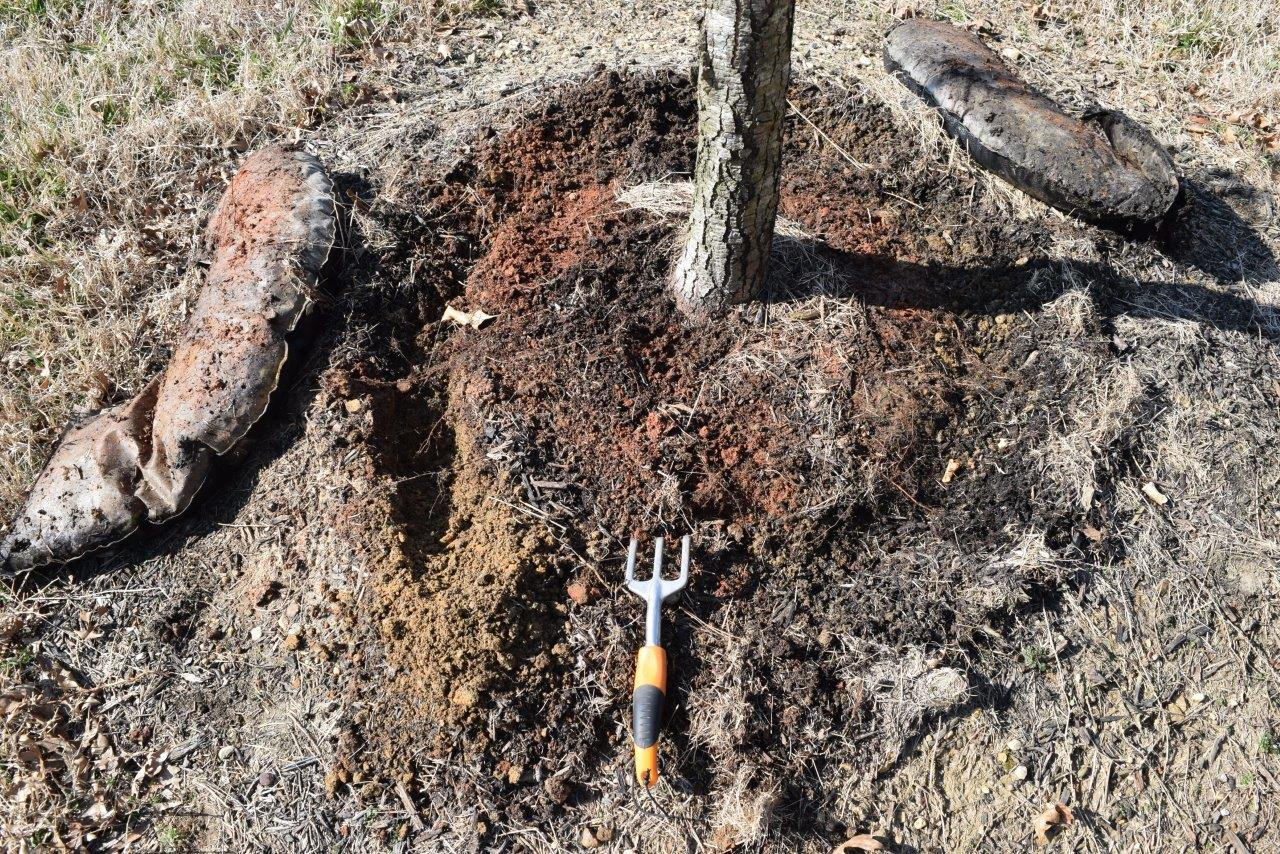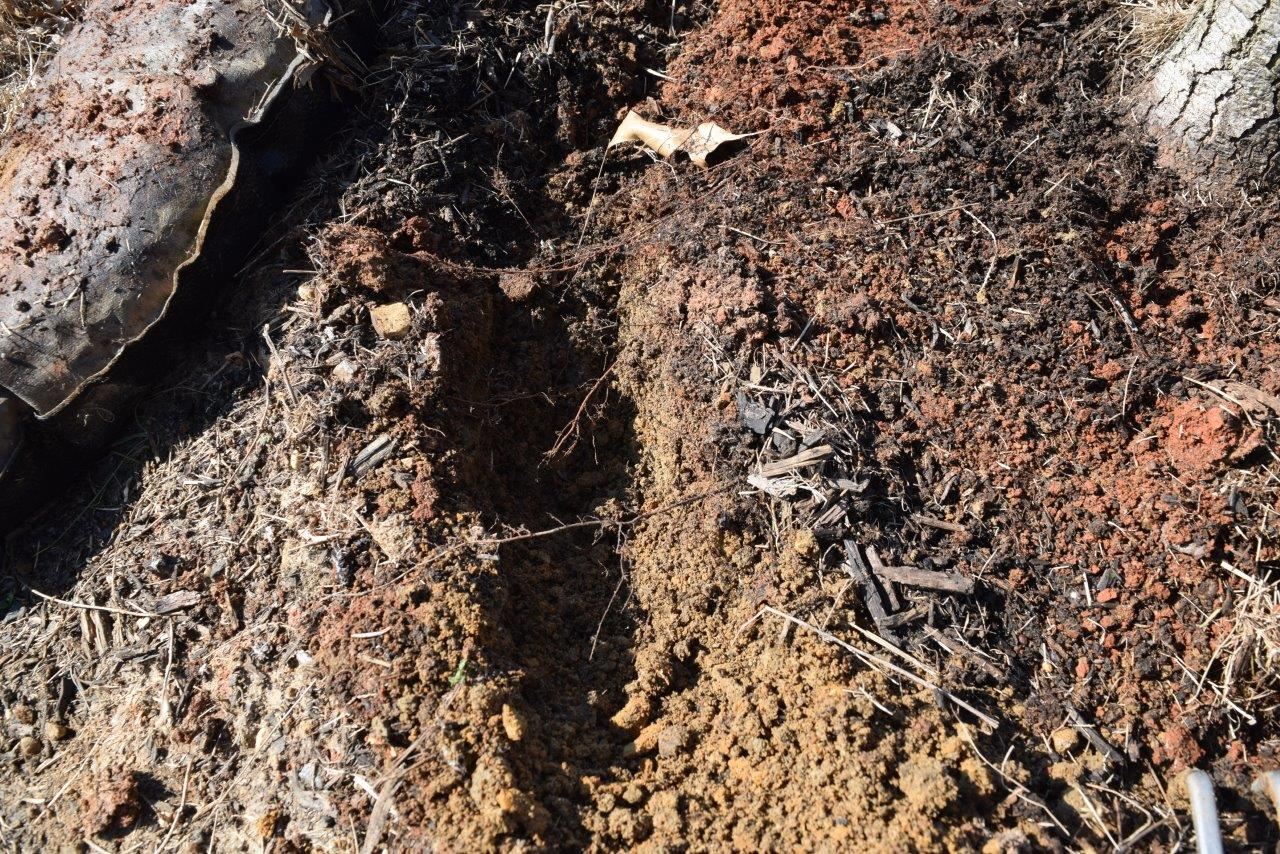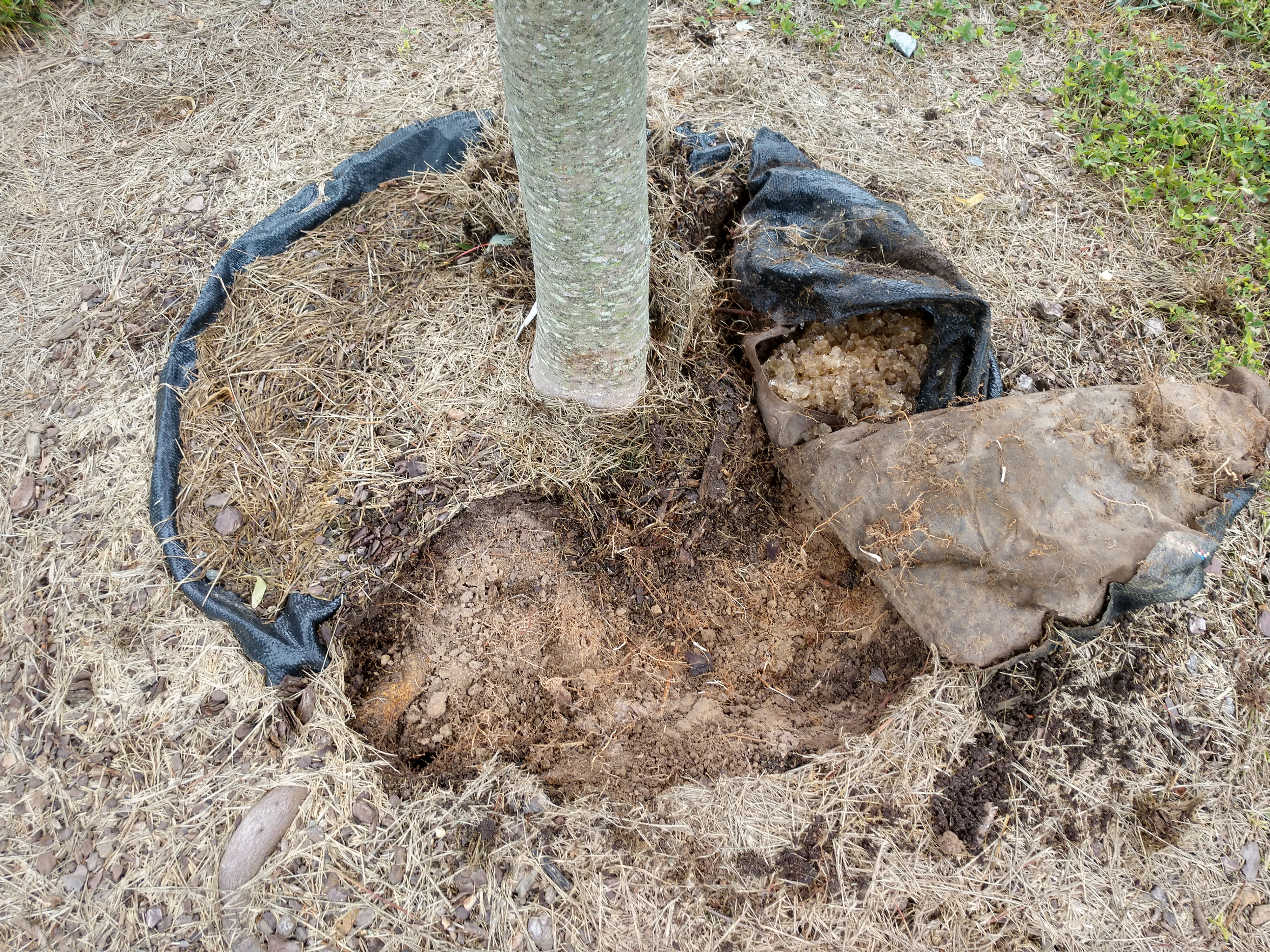Blog
Please also water the surrounding soils of a newly planted tree!
Posted March 13, 2021 by Dr. Wei Z
The most common mistakes we observed over the last 5 years is that people would choose a TreeDiaper® with the same diameter of the rootball. While it may be okay for short term survival, it is not good for the long term health of the plants. Our recommendation is that TreeDiaper® size should be roughly double of the rootball size.
Three years ago in 2018, a landscaper had to choose TD36 (30-33" diameter when charged with water) instead of the recommended TD48 for some trees with 30" rootballs. It was a comprised arrangement between the landscaper and their client due to budget reasons. It appeared that it worked well because the landscaper didn't have to provide any supplemental watering and only had to replace 1% of the trees at the one-year mark honoring the warranty.
But how do these trees do now in 2021? They are still fine by looking at them when driving by the site. But when I looked at the amount of root growth outside of the original rootball (different soil color), it concerned me for the long term health of these trees. It is minimal. There are a lot of factors that would limit the root growth into the new environment such as pH difference and soil compaction in the surrounding area. But the lack of moisture in the surrounding soil is the major reason.


In contrast, when the right TreeDiaper® sizes are used, it promotes outward root growth and reduces circular root growth. Below is a picture of a tree planted in 2014 with a rootball about 18" and the TreeDiaper® size was TD36. The picture was taken in 2019. The shallow root has nothing to do with TreeDiaper® treemat. The soil underneath is very compacted. I will write another blog about that (updates on Aug 1, 2022: Here is the blog about shallow roots: https://www.treediaper.com/blog/shallow-watering-induces-shallow-roots)

It also reminded me about another case study we did in 2017 when a tree was found dying in the middle of 2.5" of rain because an empty watering bag was blocking rainwater from the rootball. Check it out here: https://www.treediaper.com/casestudy-home-depot.cfm; and https://youtu.be/1E3kPfOH0IY
So we need to water the rootball for the immediate need of water by the trees. We also need to water the surrounding soil. By doing so, it promotes the outward root growth, facilitates the establishment of the plant in the new environment, and enhances long term health of these plants.